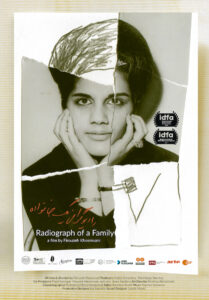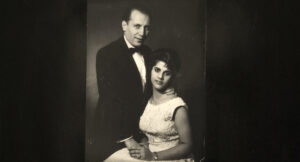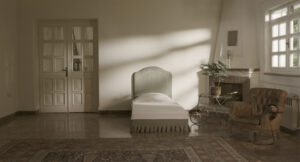AFI DOCS Review: “Radiograph of a Family” Offers a Moving, Intimate Account of the Iranian Revolution
Written by: Christopher Llewellyn Reed | July 2nd, 2021

In her latest documentary, Radiograph of a Family, Iranian director Firouzeh Khosrovani (Fest of Duty) does exactly what her title promises, examining the foundation on which her parents’ relationship was founded and what happened to it over time. The child of a Western-oriented father and a religious, Iranian-nationalist mother, Khosrovani takes us on a journey into the heart of the Iranian revolution that deposed the Shah and installed an Islamic republic in his place. What emerges is a side to the conflict not usually portrayed on screen – of a society’s internal fissures and more – and how great political events have long-term effects beyond the toppling of governments.
Told primarily through archival films and images (some of which are of other people, presented as background atmosphere), accompanied by voiceover of actors playing her parents, occasional recreations and staged visuals, and narration provided by Khosrovani, herself, Radiograph of a Family begins with the startling information that “mother married father’s photograph.” He, Hossein, was then living in Geneva, studying radiology, and she, Tayi, was in Tehran. Because of visa complications, it worked out best for Hossein, at that time the dominant one of the couple, if they married quickly, even though he was not present. And so they did, with Tayi then traveling from her home in Iran to his in Switzerland, where she would quickly discover a universe outside of her limited lived experience.

It doesn’t help that he was 18 years older, and already a man of the world, at ease in European cafés, drinking coffee and alcohol. For this part of their cohabitation, Hossein makes all the decisions, finishing his studies and assuming that Tayi will eventually come around. But why would she, since she remains detached from, and afraid of, his alien customs? Though she does not want to, she even agrees to stop wearing her traditional headscarf, a decision she makes with bitter regret. When they go on a ski trip together, she sustains a serious back injury that still plagues her to this day. Given what will later transpire, one wants to travel back in time and open Hossein’s eyes: spend time with Tayi, make her feel welcome, encourage her current interests and suggest others. Be a partner, in other words.
By the time baby Firouzeh is on her way, Tayi has had enough, and finally puts her foot down: she’s ready to head home, so their child can be born among family. His medical degree in hand, Hossein agrees, and back to Iran they go. It’s the 1960s, and though it won’t be entirely clear until early in the next decade, popular discontent is growing. Once more among fellow practicing Muslims, Tayi throws herself into the revolutionary movement, the spousal dynamic slowly shifting in her direction. Where once she was the fish out of water, now it is her husband, and though they stay together, he dwindles, and not just from age.

As their daughter, Khosrovani tries her best to please both parents, though it is pretty clear, given her artistic proclivities and analytical take on her country’s past, that she has a natural affinity for her dad’s beliefs, even if she recognizes how much better he could have been. By focusing her story so intently on the personal cost of generational upheaval, cultural as well as political, she helps make today’s Iran a place that anyone, no matter their ideology, nationality or religion, can understand. The titular radiograph, of Tayi’s injured spine, may exist in literal terms, but its larger meaning is metaphorical: by looking past the surface of that which we think we know, we just might gain an understanding of heretofore hidden truths. Lights, camera, x-ray!

